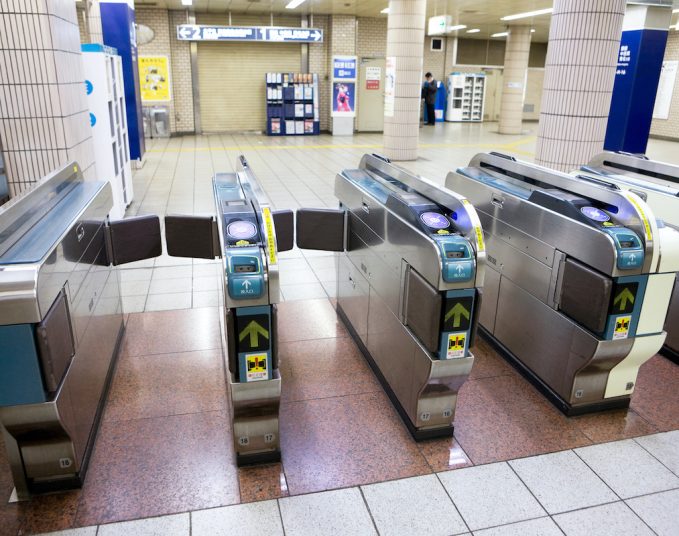I bike to work most days. On the days I can’t, I take the LRT. Despite its reputation as sketchy, I’ve found my usual route of Stadium to Corona pretty tame. But, this past Tuesday, after the Urban Development Institute — Edmonton Chapter held their Best New Communities panel discussion at the Art Gallery of Alberta, I decided to catch the train home from nearby Churchill Station.
I’m not easily spooked. I’ve spent more than my fair share of time in parts of the world far more precarious than Edmonton, but I’ll admit the eight or nine police officers that greeted me as I entered the station that evening did leave me with a lingering sense of dread.
Crime in Edmonton is down over the past year. According to stats released by EPS earlier this month, there’s been a 7.2 per cent drop in crime from 2022 to 2023 and an impressive 28 per cent drop since 2018. Yet, if you had asked me back in 2018 if I felt safe mostly walking around the city at night and riding transit, I would absolutely have told you yes (and not just because I was a 20-something with a penchant for the anxiety-reducing effects of cheap beer).
So, if things are actually looking up when it comes to crime rates in the city, how come it doesn’t seem to feel that way?
Well, one answer is because while overall crime rates in the city have come down, instances of violent crime — and the severity of that crime — have actually gone up. During a media scrum last week, EPS Superintendent Derek McIntyre told reporters that the city’s crime severity had increased by 4.6 per cent — an increase the EPS largely attributes to a 7.3 per cent increase in violent crime.
“Although we’ve had a significant drop in the rate of crime in Edmonton, we’re monitoring the fact that we’ve had an increase in severity,” McIntyre said.
I found that juxtaposition hard to square — how can we see such a dramatic reduction in overall crime rates, but an uptick in violent crime? So I asked a local criminologist to shed some light on the matter.
William Schultz, a professor at MacEwan University with a PhD in criminology, told me that statistics like those released by EPS can sometimes be a little deceptive.
“The crime rate per 100,000 people in 2019 was about 10,600 per 100,000. It’s down to 8,223 per 100,000 — which is a very significant drop,” Schultz said. “You have to remember, the lion’s share of all crime is small, nuisance crime … the vast majority of things police are dealing with are things like property offences, non-compliance, breaches of conditions and things along those lines.
“Let’s say you have a really significant drop in the number of people who are breaching court orders. That ends up being reflected as a large drop in the crime rate, even if it might not necessarily have a significant difference in day-to-day life.”
That knife can cut both ways, to use a perhaps inappropriate cliche, meaning that high crime rates can also be inflated by increases in nuisance crime. And that can have impacts on how we perceive the general safety of the place we call home.
“For every one violent crime you have in the city, you’ll probably have several hundred small, nuisance crimes like broken windows and gang graffiti,” Schultz said. “If you look at crime rates, it might appear as if the city is wildly out of control, when really it’s just a lot of nuisance stuff that’s irritating and costs money, but doesn’t have a large impact on quality of life.”
While violent crime still makes up a quite small percentage of overall crime here, Schultz said the city is still far above national, provincial and regional averages for crime severity. In fact, on the Crime Severity Index (CSI) — a tool used to measure crime severity in Canada — Edmonton ranks quite high.
“It jumped out to me. Edmonton’s CSI has significantly jumped. It’s higher than the rest of Alberta, the rest of the Edmonton metro area and it’s quite a lot higher than the Canadian average, overall, according to the EPS annual report,” Schultz said. “The average score is 80 and Edmonton this year is at about 116.
“If you have a high CSI, it means you actually have a fairly serious issue of violent crime in your community. If the CSI is low, even if crime is high, what it says is you have a lot of small crimes happening overall.”
So what’s the reason for this trend towards settling things through violence? Well, to be honest, that’s still really hard to determine. EPS will tell you it’s due, in part, to increases in the use of weapons like pepper spray and knives as well as funding instability they’ve dealt with over the past several years. For Schultz’s part, he said the causes are likely multi-pronged and complex — from turbulence in organized crime and the drug trade to instability among vulnerable populations and the support systems meant to help them — and that all of that can contribute to a wider culture of fear.
“We should be cautious about drawing conclusions without hard facts,” Schultz said. “But I think it does reflect a more unstable culture where people are feeling afraid.”
Savvy AF. Blunt AF. Edmonton AF.




